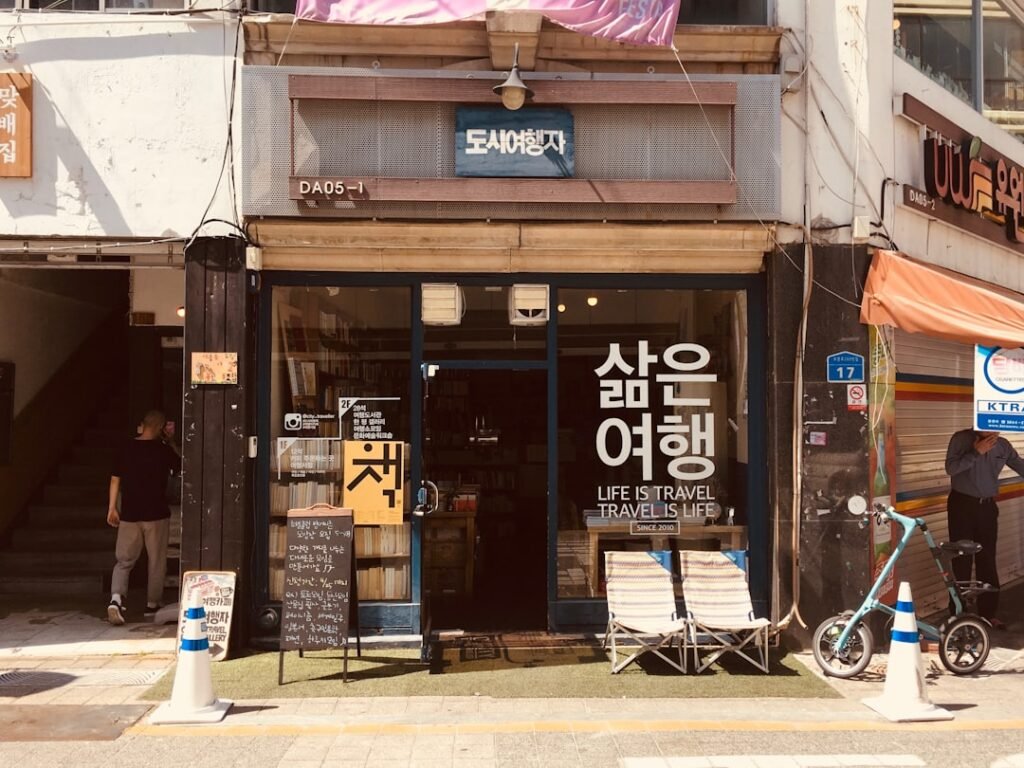

Navigating a Korean Supermarket: Essential Grocery Phrases
Korean supermarkets are vibrant hubs of culture and community, offering a unique shopping experience that reflects the rich culinary heritage of Korea. These establishments are not merely places to purchase groceries; they are gateways to discovering the diverse flavours and ingredients that define Korean cuisine. From the moment you step inside, you are greeted by an array of colourful products, enticing aromas, and the warm chatter of fellow shoppers.
The layout of a typical Korean supermarket is designed to guide you through various sections, each dedicated to specific categories of food and household items, making it an adventure for both seasoned cooks and curious newcomers alike. In addition to the vast selection of food items, Korean supermarkets often feature sections dedicated to traditional snacks, beverages, and even beauty products. This makes them a one-stop shop for anyone looking to immerse themselves in Korean culture.
Whether you are searching for the perfect kimchi, a variety of rice cakes, or the latest trendy snack, these supermarkets cater to all your needs. As you navigate through the aisles, you will find that many products are labelled in both Korean and English, making it easier for non-Korean speakers to explore and enjoy the offerings. Learn Korean in Oslo! NLS Norwegian Language School is now offering classes. Register today.
Table of Contents
ToggleSummary
- Korean supermarkets offer a wide variety of products and can be overwhelming for first-time visitors
- Basic greetings and phrases in Korean can help you navigate the supermarket and interact with staff
- Don’t hesitate to ask for help or directions if you’re having trouble finding a specific item
- Familiarize yourself with the layout of the supermarket to easily find the aisles and sections you need
- Understanding product labels and packaging is essential for making informed decisions while shopping
Greetings and Basic Phrases
When entering a Korean supermarket, a simple greeting can go a long way in enhancing your shopping experience. A friendly “안녕하세요” (annyeonghaseyo), which means “hello,” is a polite way to acknowledge staff and fellow shoppers alike. This small gesture not only shows respect but also opens the door to a more engaging interaction.
Additionally, learning a few basic phrases can significantly enhance your confidence while navigating the store. Phrases such as “감사합니다” (gamsahamnida) for “thank you” and “죄송합니다” (joesonghamnida) for “excuse me” can help you communicate effectively and create a positive atmosphere during your visit. Moreover, understanding how to ask simple questions can be incredibly beneficial.
For instance, if you need assistance finding a specific item, you might say, “이것 어디에 있나요?” (igeot eodie innayo?), which translates to “Where is this?” Such phrases not only facilitate smoother interactions but also demonstrate your willingness to engage with the local culture. By incorporating these greetings and basic phrases into your shopping routine, you will find that your experience in a Korean supermarket becomes more enjoyable and enriching.
Asking for Help and Directions

Navigating a Korean supermarket can sometimes feel overwhelming due to the sheer variety of products available. If you find yourself in need of assistance, don’t hesitate to approach a staff member. Most employees are friendly and willing to help, especially if you use simple phrases like “도와주세요” (dowajuseyo), meaning “please help me.” This phrase can be particularly useful when you’re looking for a specific item or need clarification about product locations.
In addition to asking for help, knowing how to request directions within the store can save you time and frustration. For example, if you’re trying to locate the fresh produce section, you could ask, “채소 코너는 어디에요?” (chaeso koneun eodieyo?), which means “Where is the vegetable section?” Staff members are generally accustomed to assisting customers and will appreciate your effort to communicate in their language. By mastering these essential phrases, you will not only make your shopping experience smoother but also foster connections with the local community.
Navigating the Aisles and Sections
Once you’ve familiarised yourself with basic greetings and phrases, it’s time to explore the various aisles and sections of a Korean supermarket. Typically, these stores are organised into distinct areas that cater to different types of products. The layout often includes sections for fresh produce, meats, dairy products, snacks, and household items.
Understanding this organisation can help you efficiently locate what you need. As you navigate through the aisles, take note of the signage that indicates each section. Many supermarkets use both Korean and English labels, making it easier for non-Korean speakers to find their way around.
If you’re unsure about where to find a particular item, don’t hesitate to ask staff members for guidance. They are usually more than happy to assist you in locating specific products or even recommending popular items within each section. By familiarising yourself with the layout and utilising available resources, you’ll become more adept at navigating Korean supermarkets in no time.
Understanding Product Labels and Packaging
One of the most intriguing aspects of shopping in a Korean supermarket is deciphering product labels and packaging. While many items have English translations, others may only be labelled in Korean. Familiarising yourself with common terms can enhance your shopping experience significantly.
For instance, understanding words like “유기농” (yugnong) for “organic” or “무첨가” (mucheomga) for “no additives” can help you make informed choices about the products you purchase. Additionally, pay attention to nutritional information and expiry dates on packaging. Many products will include details about ingredients, serving sizes, and nutritional content in both Korean and English.
This information is crucial for those with dietary restrictions or specific preferences. By taking the time to read labels carefully, you can ensure that you’re selecting items that align with your culinary needs and health goals.
Making Inquiries about Products

Asking questions about products is an essential part of the shopping experience in any supermarket, including Korean ones. If you’re curious about a particular item or want to know more about its origin or preparation methods, don’t hesitate to inquire. Phrases like “이것은 무엇인가요?” (igeoseun mueos-ingayo?), meaning “What is this?” can open up conversations with staff members who are often eager to share their knowledge about various products.
Moreover, if you’re interested in trying something new but are unsure how to use it in your cooking, asking for recommendations can lead to delightful discoveries. For example, if you’re eyeing a unique sauce or condiment, you might ask, “어떻게 사용하나요?” (eotteoke sayonghanayo?), which translates to “How do I use this?” Such inquiries not only enhance your understanding of Korean cuisine but also allow you to connect with staff who may share their favourite recipes or tips for using specific ingredients.
Making Purchases and Payment
Once you’ve gathered all your desired items, it’s time to proceed to the checkout counter for payment. The process is generally straightforward; however, being familiar with common phrases can make it smoother. When approaching the cashier, a simple “안녕하세요” (annyeonghaseyo) will set a friendly tone for the transaction.
After your items have been scanned, you’ll be informed of the total amount due. If you’re paying with cash or card, it’s helpful to know how to express your payment method. You can say “현금으로 할게요” (hyeongeumeuro halgeyo) for “I will pay with cash,” or “카드로 할게요” (kadeuro halgeyo) for “I will pay with card.” Additionally, if you’re unsure about whether they accept certain payment methods or need assistance with change, don’t hesitate to ask questions like “이 카드 받으세요?” (i kadeu badeuseyo?), meaning “Do you accept this card?” Being prepared with these phrases will ensure that your checkout experience is efficient and hassle-free.
Understanding Discounts and Promotions
Korean supermarkets often feature various discounts and promotions that can significantly enhance your shopping experience. Familiarising yourself with common terms related to sales can help you take advantage of these offers. For instance, “세일” (seil) means “sale,” while “할인” (halin) refers to “discount.” Keep an eye out for signs indicating special promotions or limited-time offers throughout the store.
If you’re interested in learning more about specific discounts or loyalty programmes available at the supermarket, don’t hesitate to ask staff members for details. You might say something like “할인 카드 있어요?” (halin kadeu isseoyo?), which translates to “Is there a discount card?” Understanding these aspects not only allows you to save money but also enhances your overall shopping experience by encouraging exploration of new products.
Exploring Fresh Produce and Meats
One of the highlights of visiting a Korean supermarket is exploring the fresh produce and meat sections. These areas are often filled with vibrant colours and enticing aromas that reflect the freshness of the ingredients available. When selecting fruits and vegetables, it’s helpful to know some basic vocabulary related to common items.
For example, “사과” (sagwa) means “apple,” while “배추” (baechu) refers to “napa cabbage,” a staple in many Korean dishes. When it comes to meats, understanding how they are labelled can be beneficial as well. Look for terms like “닭고기” (dakgogi) for chicken or “소고기” (sogogi) for beef.
If you’re unsure about how certain cuts are prepared or cooked in Korean cuisine, don’t hesitate to ask staff members for recommendations on popular cuts or cooking methods. Engaging with fresh produce and meats not only enhances your culinary repertoire but also allows you to appreciate the quality of ingredients available at Korean supermarkets.
Finding Essential Ingredients for Korean Cooking
For those interested in delving into Korean cooking, knowing where to find essential ingredients is crucial. Items such as gochujang (red pepper paste), doenjang (fermented soybean paste), and sesame oil are staples in many Korean recipes. These ingredients can typically be found in dedicated sections within the supermarket that focus on Asian or international foods.
When searching for these items, it may be helpful to ask staff members for assistance if you’re having trouble locating them. Phrases like “고추장 어디에 있어요?” (gochujang eodie isseoyo?), meaning “Where is gochujang?” can guide you towards the right aisle. Additionally, exploring other sections may lead you to discover new ingredients that could enhance your cooking experience further.
By familiarising yourself with essential ingredients and their locations within the supermarket, you’ll be well-equipped to create authentic Korean dishes at home.
Conclusion and Recap of Essential Grocery Phrases
In conclusion, navigating a Korean supermarket can be an enriching experience filled with opportunities for cultural exchange and culinary exploration. By familiarising yourself with essential phrases related to greetings, asking for help, making inquiries about products, and understanding payment processes, you’ll find that your shopping trips become more enjoyable and efficient. As you embark on this journey through the aisles of a Korean supermarket, remember that each interaction is an opportunity to learn something new about the culture and cuisine.
Embrace the vibrant atmosphere and take advantage of the diverse offerings available. And if you’re inspired by your experiences in these supermarkets and wish to deepen your understanding of the language and culture further, consider enrolling in Korean courses at the NLS Norwegian Language School in Oslo. Their comprehensive programmes provide an excellent foundation for anyone looking to enhance their language skills while immersing themselves in Korean culture—perfect for those who want to make their next grocery trip even more rewarding!
If you want to learn Norwegian, you can register for classes here. We look forward to hearing from you and helping you become fluent in Norwegian.





